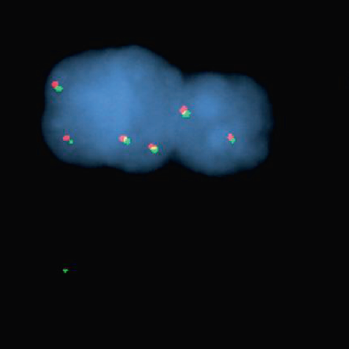
Glioneuronal tumors constitute a histologically diverse group of primary central nervous system neoplasms that are typically slowgrowing and managed conservatively. Genetic alterations associated with glioneuronal tumors include BRAF mutations and oncogenic fusions. To further characterize this group of tumors, we collected a cohort of 26 glioneuronal tumors and performed indepth genomic analysis. We identified mutations in BRAF (34%) and oncogenic fusions (30%), consistent with previously published reports. In addition, we discovered novel oncogenic fusions involving members of the NTRK gene family in a subset of our cohort. One-patient with BCAN exon 13 fused to NTRK1 exon 11 initially underwent a subtotal resection for a 4th ventricular glioneuronal tumor but ultimately required additional therapy due to progressive, symptomatic disease. Given the patient’s targetable fusion, the patient was enrolled on a clinical trial with entrectinib, a pan-Trk, ROS1, and ALK (anaplastic lymphoma kinase) inhibitor. The patient was treated for 11 months and during this time volumetric analysis of the lesion demonstrated a maximum reduction of 60% in the contrast-enhancing tumor compared to his pre-treatment magnetic resonance imaging study. The radiologic response was associated with resolution of his clinical symptoms and was maintained for 11 months on treatment. This report of a BCAN-NTRK1 fusion in glioneuronal tumors highlights its clinical importance as a novel, targetable alteration.